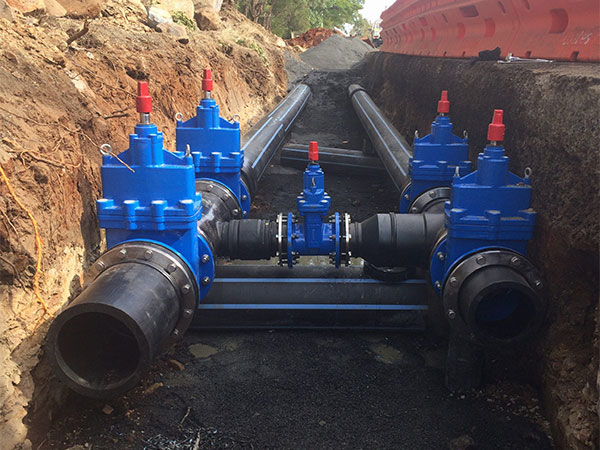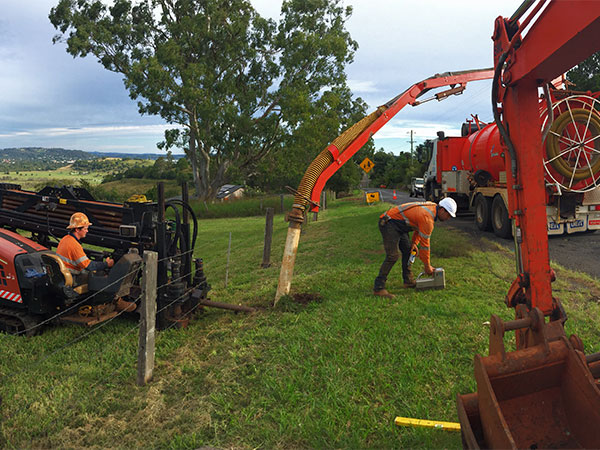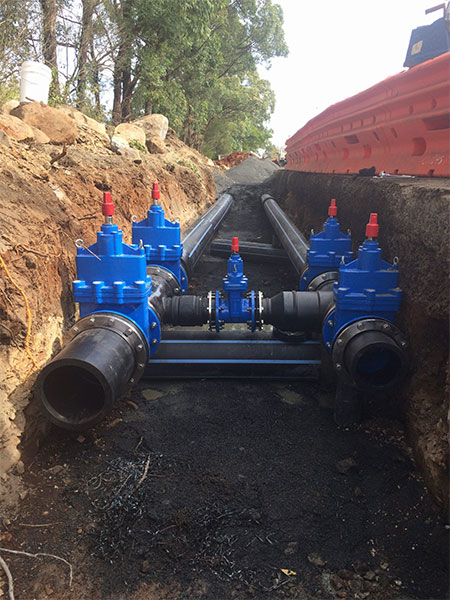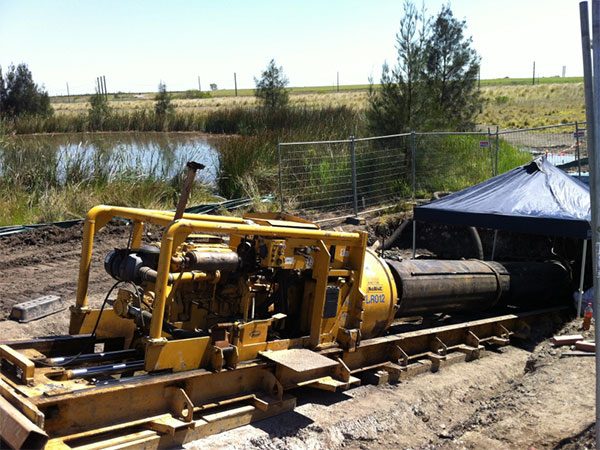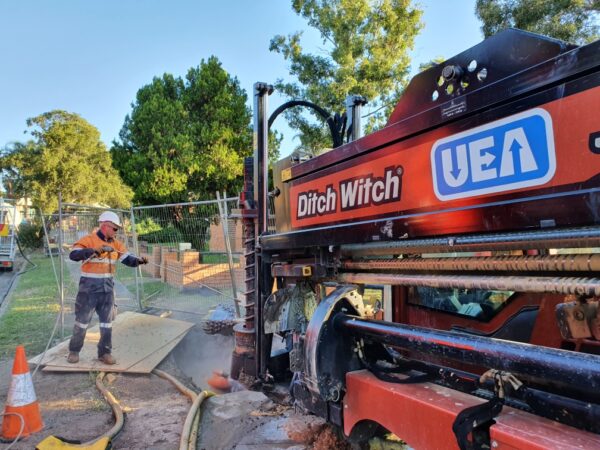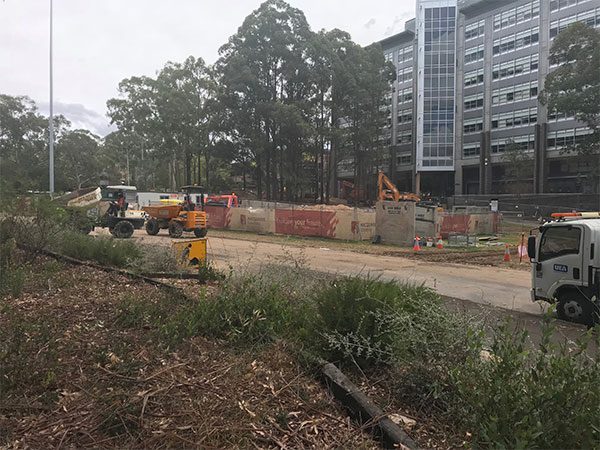Scope of Works
The original scope required the installation of 1,589 metres of 225mm and 1,423 metres of 300mm PN16 PVC water main by open trench. UEA proposed an alternate method of installation by utilising horizontal directional drilling (HDD), which council approved. Due to the installation method changing, the product pipe also had to be converted to 280mm (225mm internal) and 355mm (300mm internal) PN16 Polyethylene (PE) pipe. In addition, 430 metres of 125mm sleeve with 40mm product pipe road crossings were installed using HDD to replace the existing service connections.
CONSTRUCTION
UEA utilised a DitchWitch AT3020 to perform the works. The benefits of using this drill were its small footprint, as well as its ability to deal with the expected changing ground conditions at this location – soft clays and rock. The ground conditions proved difficult, but a combination of good drilling practise, good drill fluid management and excellent reamer choice ensured the new pipe was installed in line with the client’s programme. UEA’s civil crew then linked up all the new pipe, installed hydrants, air valves and scour pits. Each house was then connected to the existing system with all testing, flushing and commissioning completed satisfactorily.
Challenges
Several difficulties were encountered during the drilling process, some of which included:
- Large, extremely hard floating boulders. These boulders were difficult to drill through, especially when the surrounding ground conditions were soft. Rather than changing drill heads and possibly damaging cutting teeth, UEA dug up and removed each rock before continuing to drill. Due to the shallow depth of the main, dig ups were not an issue.
- Reactive and soft ground conditions. At the start of the project, this combination of ground conditions and travelling at shallow depths meant that the surface level humping became an issue that could cause major damage. Utilising knowledge within the company, the methods and tooling were altered and boring longer shots of large diameter was possible without any damage to existing surface levels.
- Temporary traffic lights to shut down one lane. Traffic lights were not able to be turned on until 9:00 each morning due to local traffic restrictions, so additional staff were required each morning to operate Stop/Go until the lights were able to be turned on.
Between the extensive knowledge of UEA’s team, and a close working relationship with council, these issues were overcome with no effect to the project for the client.

